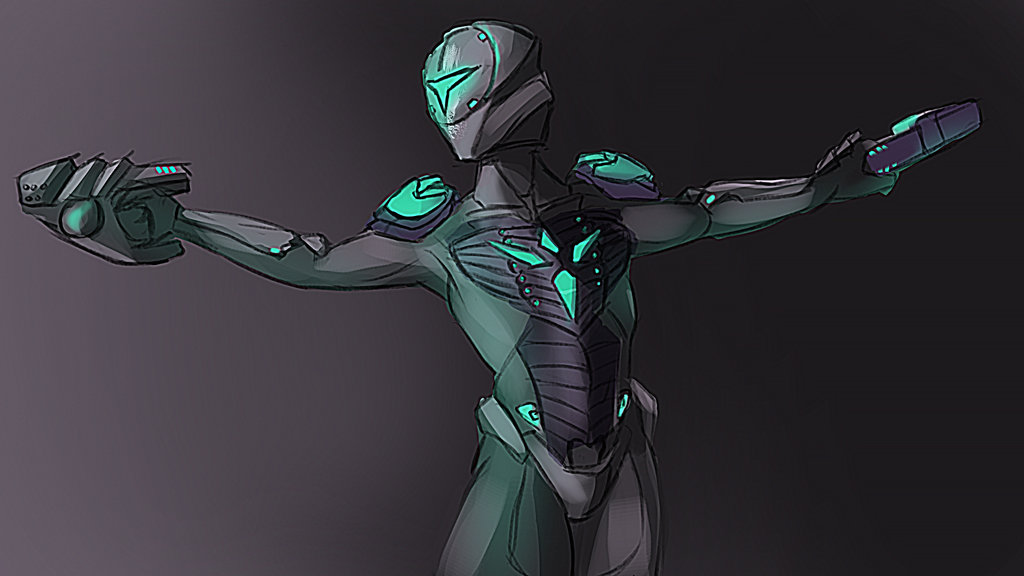In this guide you will find color-coded references to other guides and materials:
- Dark orange links to other guides
- Purple links to videos in pop-up viewboxes
- Blue links to images in pop-up viewboxes
Grey italic text with an orange border on the left are quotes by CuteBeaver, an expert Stalker and PlanetSide 2 veteran.
Subclass Overview
Stalker Infiltrators use Stalker Cloaking ability, which can recharge energy even when cloaked, as long as the user remains stationary, and at the cost of giving up the primary weapon slot.
Some people call Stalkers weak and underpowered to the point of being a joke. Other people consider the whole concept of permanent cloaking to be annoying and nearly overpowered.
Both groups have reasons to their opinions. I think Stalkers are balanced in infantry combat, but unfortunately limited against vehicles, and almost entirely separated from the vehicle play, as vehicles can’t do anything about Stalkers either. But you still can impact the combined arms aspect by hacking turrets to attack enemy vehicles, and hacking terminals to pull vehicles of your own.
Playing Stalker Infiltrator can be both exhilarating and fun, and extremely frustrating. It’s certainly not for everyone. For best results, it requires:
- Experience and intelligence, in order to outsmart and outplay your opponents.
- Mechanical execution, such as quick reflexes and the ability to press a lot of buttons in correct order and short amount of time.
A competent Stalker player needs to be able to switch gears from careful planning and sneaking to adrenaline rushed execution in a heartbeat, and its the contrast that makes Stalker so enjoyable.
Equipment
Lack of access to primary weapons limits Stalker’s options in face-to-face combat, but the rest of their kit is well suited to sabotage and diversion, and the firepower of secondary weapons is generally enough to pull off an ambush.
Secondary Weapon
Hunter QCX Crossbow
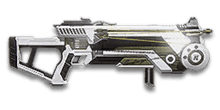
Hunter Crossbow was released at the same time as Stalker Cloak itself. They are destined for each other. Crossbow’s sheer power and versatility cannot be overstated.
Stealth
When firing the crossbow, you won’t appear on the minimap of enemies outside 10m. Bolts have barely noticeable tracers, and obviously there is no muzzle flash. Crossbow’s sound is unique and recognizable, but not very loud.
Crossbow’s stealth helps offset the low rate of fire, since it usually takes enemies a while to figure out where they’re getting shot from.
Having a stealthy weapon as a stalker increases your life expectancy and makes it easier to chain ambushes.
High damage per shot and long effective range
Crossbow is very consistent at what it can do:
- Two bodyshots reliably kill enemies within 40m even through Nanoweave.
- Crossbow is the only weapon that works with bodyshots as a baseline. Other sidearms have to rely on headshots more often.
- One bodyshot reliably kills after after an EMP grenade. It’s also likely to finish off the enemy if he survived a partial hit by AP Mine.
- Quick melee attack will reliably kill after a crossbow bodyshot, even through Nanoweave. This combo can be hard to execute properly, but kills nearly instantly, making the crossbow very scary in close quarters.
- Crossbow can one-hit-kill Infiltrators within 45m on a headshot, making it a great anti-sniper weapon.
- One shot destroys deployables, such as Motion Spotters.
High damage per shot lets the Crossbow pretty much ignore Nanoweave, which is a big hurdle for other sidearms.
Crossbow’s long effective range makes you able to act on more targets of passing opportunity; targets that would stop being vulnerable by the time you close the distance to attack with another sidearm. And many sidearms become nearly useless at 20m already.
Crossbow also carries a ton of spare ammo, which allows to forego using Ammo Printer or Ammo Belt.
Having a weapon that deals damage in strong, infrequent bursts is generally useful during ambushes, as it makes it easier to conceal your position. It’s much easier to react to a continuous stream of bullets rather than to plink -> pause – where the shot came from!? -> plink -> dead.
Often you can outright oneshot already wounded enemies. Stalkers are all about analyzing information and acting on it, like KNOWING you can kill an enemy with a bodyshot after you saw him lose shields to your ally. Crossbow’s consistency lets you focus on quality of your ambushes rather than weapon handling.
Overcoming difficulties
Hunter Crossbow has two major drawbacks:
(1) Slow projectiles with a lot of drop make shots difficult to hit, especially against moving targets at range.
Indeed, this is a problem, no way to sugar coat it. Using the crossbow is hard and takes experience.
Remember that as a stalker with the crossbow, you’re not supposed to engage in conditions of “hit this shot or die”, unless something goes horribly wrong. Stalkers are all about engaging on their terms, and this helps to deal with this drawback.
(2) It’s probably the worst weapon in a direct confrontation due to long time-to-kill and low rate of fire.
While obviously you should avoid such confrontations as a stalker, sometimes it just happens, and then the crossbow is likely to get you killed, unless you can melee combo the enemy.
Other options
However great the Crossbow is, it’s not your only option, and may not even be the best option for you. The best weapon is always the weapon you are most effective with, and you should feel free to use any weapon you like.
Stalkers should be able to start an engagement on their terms, and that makes any sidearm viable, as long as you adjust your playstyle to its strengths and weaknesses.
Primary weapons typically have faster time to kill and larger magazines, which allows them to deal more damage before having to reload.
They can afford to miss, or spray everything that moves. You cannot. If they get caught in a reload, they can switch to their secondary. You cannot.
Since as a Stalker Infiltrator you are using a weaker secondary weapon, not only must you fire first, but you also want to stack extra advantages.
Your weapon is up to the task of killing enemies, but you need to have a good sense of timing and work harder for your kills.
Excelling with a secondary weapon is a requirement for Stalkers. Ideally, you should find a weapon that works best for you. This is going to come down to your own playstyle and personal skills.
I could recommend you to use the crossbow, but that may not be a good fit for you. Try out all sidearms in VR Training. Follow your instincts. If you fall in love with a weapon – do not put it down. Use the weapon that you enjoy the most.
Before unlocking the weapon, use the 30 minute trial button below the “unlock” button, and test the weapon against live enemies.
Keep in mind that you cannot trial attachments, specifically the reflex sights that would make it easier to get a Headshot Opener. Once you have a grasp on which weapon you like the most, look up facts about the weapon. Know its effective range, how many headshots it takes to drop a target.
Learn to push your weapons to its limits. Tailor your loadout to complement your weapon, and player skills. Do your best to make up for any shortcomings you discover.
When I started using my crossbow, everyone told me it was a garbage secondary weapon and that I should stop. However, if you are passionate about your weapon you are going to find ways to make it work. Fast forward years later… Having a crossbow (to me) feels more powerful than holding an SMG. It was a hell of a learning curve to get to this point, however.
Do not expect instant success, it will take time to develop confidence in your weapon. Never hesitate to try new combinations, and push the meta forward. Be open to other suggestions, but recognize that opinions of other people may not work for you specifically.
Failure and mistakes are just part of the learning process. Each death teaches you something new.
What makes infiltrators great is the depth and variation between playstyles. We don’t think or operate the same. You will never find two identical infiltrators.
Tool
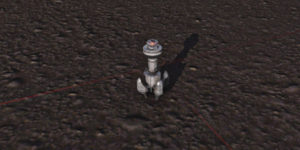
Motion Spotters have great synergy with Stalkers, and they should be your default choice:
- As a stalker, you can cover limited distance before you have to stop and let cloak energy recharge, so in a sense you are tethered to a certain area of operations, and the Motion Spotter gives you intel on moving enemies in that area.
- Motion Spotters can be used as bait.
- Having real-time information on enemy movement and facing direction at close range can increase the success rate of your ambushes.
- Stalkers tend to take more time to accomplish things, and Motion Spotters have much longer overall uptime than Recon Darts.

Recon Device is not entirely without use. It can be great for Perching and in any ranged loadout in general. Recon Darts tend to attract enemy attention to a certain area without giving away your real position, giving you the opportunity to take out enemies with your ranged sidearm, when they come to investigate.
Ability: Stalker Cloaking
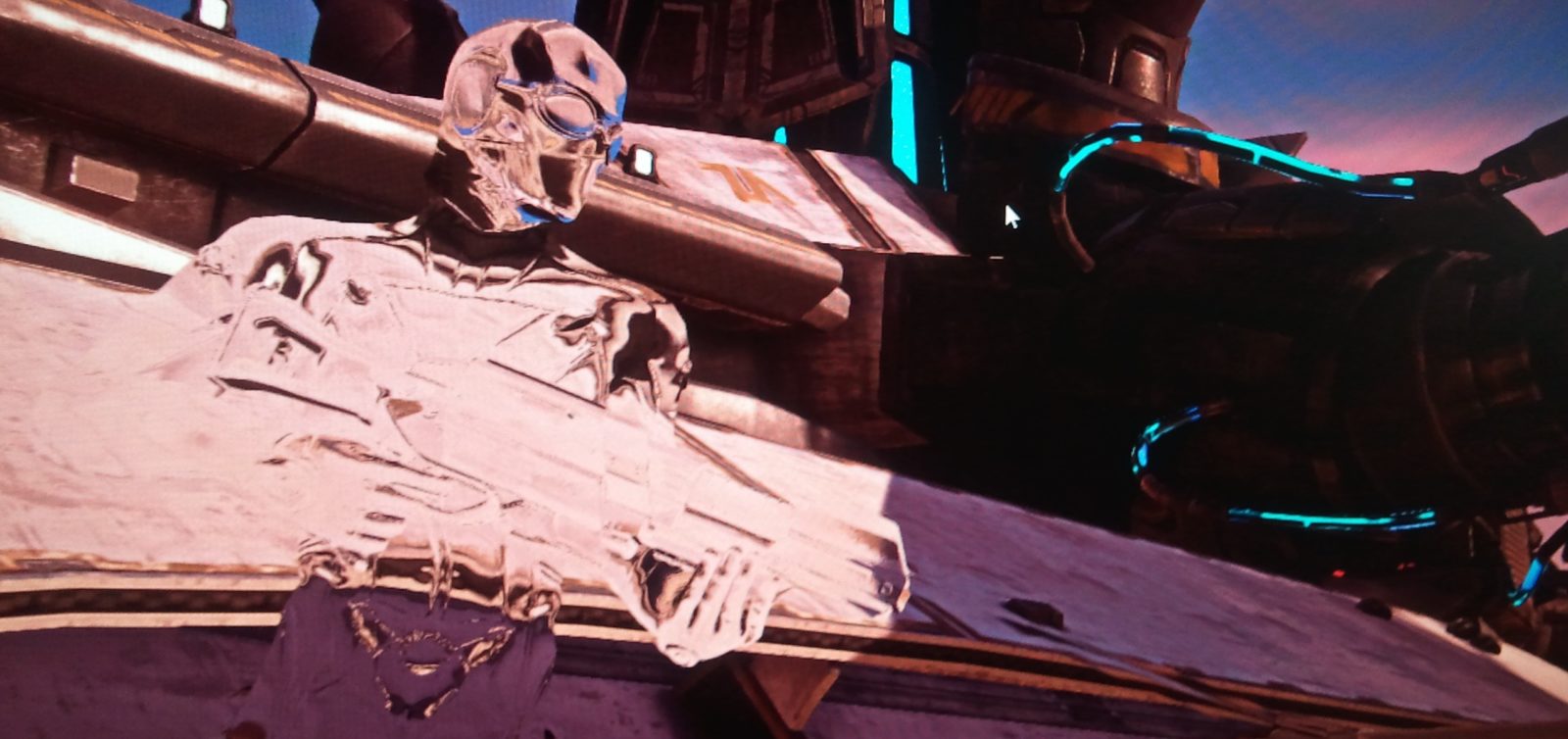
| Unlock Cost, certs | Free | 100 | 200 | 500 | 1000 |
| Cloak Duration, sec | 12 | 13 | 14 | 15 | 16 |
| Recharge while Cloaked and Stationary, sec | 14 | 13 | 12 | 11 | 10 |
| Recharge while Uncloaked, sec | 10 | ||||
 You’re granted the first rank of the ability for free, and it is enough to give Stalker a try, but for comfortable and effective play, it is strongly recommended to max out this ability, if you’re serious about playing Stalker. Upgrading significantly reduces the downtime when trying to get from point A to point B.
You’re granted the first rank of the ability for free, and it is enough to give Stalker a try, but for comfortable and effective play, it is strongly recommended to max out this ability, if you’re serious about playing Stalker. Upgrading significantly reduces the downtime when trying to get from point A to point B.
Stalker cloak is the stealthiest cloak in PlanetSide 2. It allows you to get into position and remain undetected until the perfect moment. This makes killing possible and viable even without a primary weapon, and provides invaluable tactical advantages in teamplay setting, helping to keep your squad alive and on point.
Cloaking sound is the single worst drawback when it comes to stealth play. Cloaking is so loud it can be heard roughly 300 meters away.
Other types of cloak cannot remain concealed for long periods of time. Only Stalker Cloak gives you control as to exactly when you wish cloak and uncloak. This allows for a better timing and pacing between decloak sounds, adding additional ambiguity to your last known position.
When sneaking up behind enemies from extended distance, other cloak types often force their user to choose between two bad options:
1) Cloak and decloak several times along the way, but that would make too much noise, which is generally not helpful when flanking.
2) Try to avoid making noise, and don’t use the cloak at all, but then risk being seen.
Stalker Cloaking doesn’t force the user to make that choice, and can keep you cloaked the whole way.
You cannot recharge your personal shields and benefit from healing affects while cloaked. As a Stalker you can mitigate this drawback by finding safe spots to hide and heal yourself.
Passive System: Hacking

Stalkers make the best Hackers due to their mobility and ambush potential.
Suit Slot

Your Suit Slot choice will mostly depend on your playstyle and other equipment choice.

Adrenaline Pump has great synergy with Stalker Infiltrator, as it increases the distance you can cover while cloaked before you have to sit down and recharge. It is also very favorable for melee combat, so you can chase enemies better, and close the distance during melee combat.

Ammo Belt – in contrast, if you wish to keep your distance and kill enemies with your Sidearm, you’re likely to quickly run out of ammo, unless you’re using Inquisitor. NS sidearms, including the Crossbow, also tend to have plenty of reserve ammo.

Grenade Bandoleer – since you have to sacrifice your primary weapon slot, it does make sense to compensate and increase your total carried firepower with extra grenades or throwing knives.
You can use other suit slots if you wish, but these three are the most powerful, depending on what you want to focus on: melee kills, sidearm kills or overall impact. Honorable mention:
 Nanoweave Armor can be useful for aggressive close quarters playstyles, though it is a crutch more than anything else, and you should learn to operate without it, once you’re more comfortable with the Stalker.
Nanoweave Armor can be useful for aggressive close quarters playstyles, though it is a crutch more than anything else, and you should learn to operate without it, once you’re more comfortable with the Stalker.
Grenade


EMP grenade should be the default choice for Stalkers, especially when not using Bandoleer. In addition to its unrivaled utility of clearing off enemy Motion Spotters and other deployables, it can be a great equalizer for your weapons. Notably, Crossbow and melee weapons need only 1 hit on a fully EMP’d target to kill.

Frag Grenades are generally not worth using, with the exception of using Bandoleer in overpopulated fights, where you can flank a choke point packed with enemies, and bombard their position with Frags.

NSX Fujin throwing knife isn’t as versatile as EMPs, but its ability to OHK on a headshot shouldn’t be dismissed casually. It’s not easy to use, but gives you an extra tool for quick and silent kills.
Utility
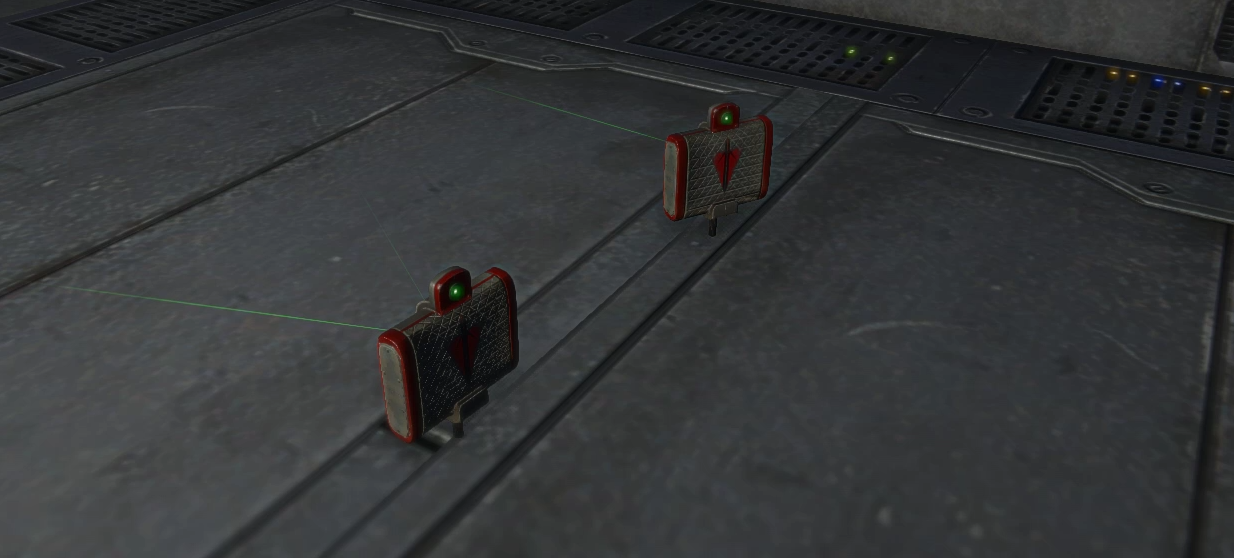
Med Kits are a great choice for farming melee or sidearm kills, and sustaining you in the field if you choose not to run Regeneration Implant.
Due to instant healing, Med Kits can be great at helping you escape if you get caught. This property can be especially helpful when running a specialized short range weapon, like Mag-Scatter, so that if someone does spots you while moving to engage, you can eat Med Kits and escape. Since the Mag Scatter is a very specialized short range weapon, it doesn’t allow you to return fire in most cases, and running becomes the only option.
If movement and being killed on route is a problem for you, then do equip medkits until you become more comfortable with bases and know good pathways and hiding spots. Its a good crutch to use while learning layouts or even getting familiar with your weapon.
Anti-Personnel Mines will increase your potential impact. This is where faction choice will matter.
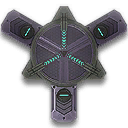
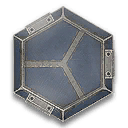
VS Proximity Mines and NC Bouncing Betties deal AOE damage around them, they often wound, but rarely kill a full health enemy, so they are great at finishing off fleeing enemies or against groups of players, if you can sneak up on them.
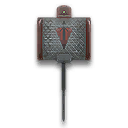
TR Claymores deal lethal damage in 90 degree cone in 2m in front of them. They don’t often get to do damage, but when they do – they usually kill. They can be useful in protecting your flanks and doorways.
Melee
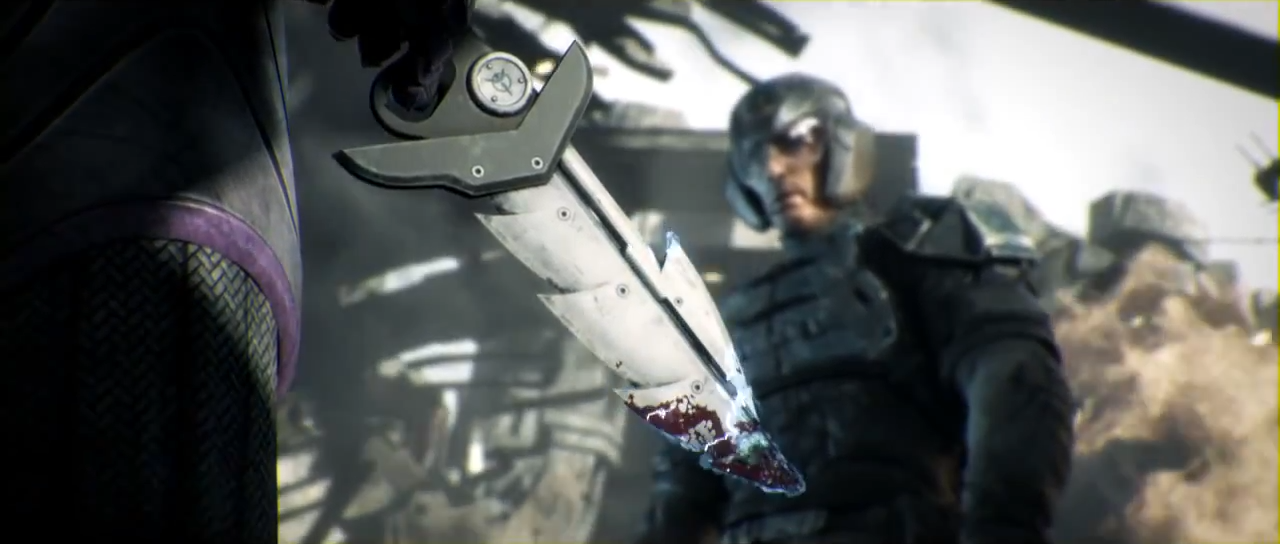
Melee weapons are great for ambushing, because they:
- Bypass nanoweave and in most cases can kill faster than most sidearms.
- Frontload a lot of damage.
- More silent than firearms.
Stalkers often can safely close distance with the enemy, making them the premiere class for killing enemies with melee, with Light Assault being a distant second. Any enterprising Stalker should learn how to use melee weapons properly.
Standard Knife versus Power Knife
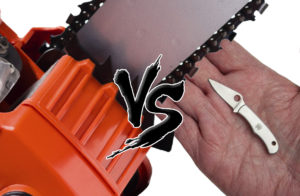
Standard knives are a good starting point, as they are fast and easy to hit with.
However, ultimately, Power Knives are just better. The ability to instantly kill any enemy, including a shielded Heavy Assault (on a headshot), cannot be overstated.
- You need to manually activate it, which can be tough if you’re trying to: sprint up, decloak, equip the knife, activate it, strike – all at the same time.
- Hits are harder to score.
- Longer delay between swings. You really need to hit that first swing.
Despite the added difficulty, power knives are well worth using, and you should transition to a power knife once you have enough experience and certs.
Implants

Recommended Implants
Stalker Infiltrators have a plethora of amazingly strong implant choices, but most of them are rare and expensive to upgrade. If you don’t have access to them, it is perfectly fine to go with these two common implants:

Of course, Ammo Printer is only useful if you actually live long enough to need that extra ammunition. And now that you can restore ammunition from Ammo Packs while cloaked, including enemy Ammo Packs, the Ammo Printer is far from mandatory.
It is great for perching playstyle, supplying sidearm ammo even without Ammo Belt.
Luxury Implants
Honorable mentions
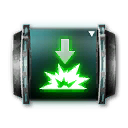

Basic Rules
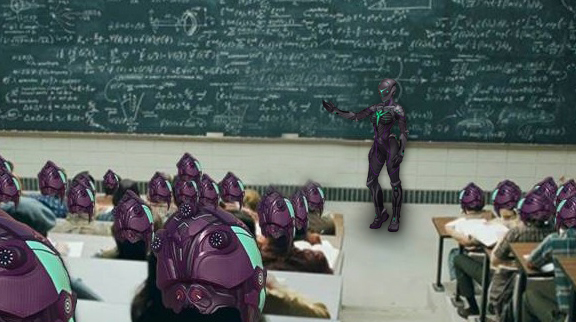
Allies don’t give a damn about you. While you are crouching in deep cloak, they will use you for cover, attract enemy attention and bullets to you. When you go in for a melee kill, they will shoot your target and you too. Don’t be mad at them – you can’t expect others to bend to your playstyle. Just keep a safe distance.
Use your allies as a distraction. An enemy is easier to kill while he’s busy shooting your ally. Or busy getting shot by your ally. Or busy cowering in cover after getting shot by your ally. You get the idea. Despite often being a liability, your allies are your best asset in getting good ambushes.
That’s why it can be so hard to ambush people in small battles – there’s not enough distraction going around.
90% of players have terrible awareness. Vast majority of players will ignore it when you decloak behind their back with a roaring power knife. They won’t care when you slice the throat of their nearby friend, unless it happens in their direct line of sight.
They will not notice you if you sprint cloak in their field of vision, unless you’re very close. They will ignore the minimap. Sometimes they will not even react when you decloak behind their back and stab them, and just keep going about their business like nothing happened.
You are never invisible. In contrast with previous point, the remaining ~10% of players will pay attention, and they will see you through cloak and react to minimap and sound cues. In some exceptional cases, producing even one cloaking sound, or even one minimap blip can give enough information to someone to go and hound you.
Check your surrounding before decloaking to engage. Just take a quick look around and make sure nobody is looking in your direction, especially from your back and sides. Stalkers in deep cloak are not immediately punished for bad positioning, and it is up to you to make sure you’re safe to engage.
Enemy awareness and reaction speed fades as distance to the front lines increases. The further behind enemy lines you go, the more relaxed enemies will be, but there will be fewer things to distract them as well.
Have a moral code. Have mercy on the experience of your fellow players – even if they play for a different faction. Ultimately, we’re all people here, and we all play to have fun. As a stalker, you are inherently a bit cheap and cheesy. There is no need to slump into pits of absolutely terrible gameplay, like camping or mining spawns and terminals.
You are not versatile. Some bases and some fights just don’t favor Stalker Infiltrator. If the fight is overcrowded, sneaking around and ambushing lone, weakened targets becomes increasingly difficult. Indar and Esamir in particular can be very frustrating. Be ready to adjust your loadout, switch classes, or even leave the fight altogether.
General Strategy
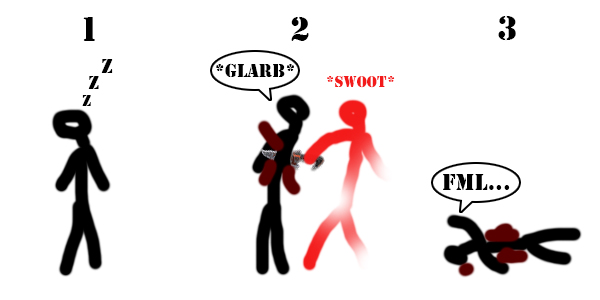
Stalker Infiltrators are all about balancing Risk versus Reward.
Low risk – low reward. Sitting in deep cloak away from combat is very safe, but you will never accomplish anything if that’s all you do.
High risk – high reward. Sprint cloaking into a pack of enemies with a Power Knife will get you killed most of the time, but there is a small chance you’d be able to cut them all down and survive.
Naturally, you want to minimize the risk and maximize the reward. The best part about Stalker Infiltrator is potentially infinite cloak energy, which means potentially infinite time.
Playing stalker is all about finding or creating moments of opportunity that let you minimize the risk and maximize the reward.
Movement
Before you proceed, make sure to go through the description of Cloaking and Concepts of Stealth.
The general goal of your movement is to put you in a position that:
Gives you an opportunity to attack enemies from a direction they don’t expect an attack from. In broad terms, this is any direction that is not “towards the front lines”.
Players often consider the direction to their spawn the safest. And indeed, attacking from the spawn direction is usually a bad idea, because you risk getting engaged in the back by approaching enemy reinforcements.
But if you keep your ambushes short, and have a good escape route, it can be a viable option.
Gives you an escape route to restealth. Preferably, several to choose from. You have limited firepower, you can’t stand your ground like a Heavy Assault could. You need to restealth between engagements and strike when the enemy is weak, at the moment of your choosing.
Distractions make movement easier and safer. Anything can be a distraction – explosions, your allies drawing fire – they all attract enemy attention to a specific direction.
In this video, I used the burning Sunderer to cover my attack, and then used a traffic accident to cross open space. Drivers were focused on getting untangled, and if other enemies glanced back – they would be focused on the accident and not me.
Deep Cloak
If the enemy doesn’t know about you, sitting in deep cloak makes you effectively invisible, unless the enemy is physically bumping into you.
But if the enemy knows for a fact that a cloaked infiltrator is in a certain area, it’s only a matter of time before you are found and killed. In some lighting and background conditions, you may be seen as far as ~10m away.
While you’re sitting still, your character will still make idle animations, like breathing and slightly waving his weapon around. To stay almost completely still you can Aim Down Sights.
Known bug: sometimes player’s head or weapon’s magazine has a different cloaking state than body. To prevent from being affected by this bug, do not sit still in Deep Cloak for too long, make tiny crouchwalking steps from time to time.
Crouch Walking
Crouch walking is almost always completely safe, unless an enemy is staring in your direction at close range. When in doubt – crouch walk. In general, crouchwalking is very underused. All infiltrators should crouchwalk more.
Cloak Sprinting
But even as a Stalker, nothing is stopping you from hauling ass when the time is right. You don’t need to move slowly all the time. Sometimes its preferable to move quickly and reposition and use cover for your escape, or seize the initiative and attack.
It is not time-efficient to slowly and patiently crouch walk on every enemy, and most enemies will not stay in one place for so long anyway. There is also an overall time limit on any given battle, and if you go too slowly, you risk never having a chance to accomplish anything before the battle is over.
So you will have to cut corners and sprint cloak, sometimes even through enemy’s field of vision – but only do that if they are clearly distracted by something else. There is no punishment for death in PlanetSide 2, so let the enemy teach you what is acceptable, and what isn’t.
Respect Motion Spotters, and try to clear them with EMP grenade or a weapon before sprinting through the area.
When moving to engage, be wary of your cloak energy. If it runs out shortly before you press the ability key to decloak, it may actually recloak you instead, fumbling your attack.
Sprint cloaking is less visible:
- In the darkness of the night.
- Against bright snow, sand and sky.
Be careful when approaching corners, there is always a risk of running into a face of a Heavy Assault, even if the area seems clear. A generous use of Motion Spotters is often enough to mitigate that risk.
Maximum distance you can cover while cloaked can be calculated, because we know infantry movement speed and cloak duration. For maximum rank of the ability, it is roughly 100m.
Field of Vision
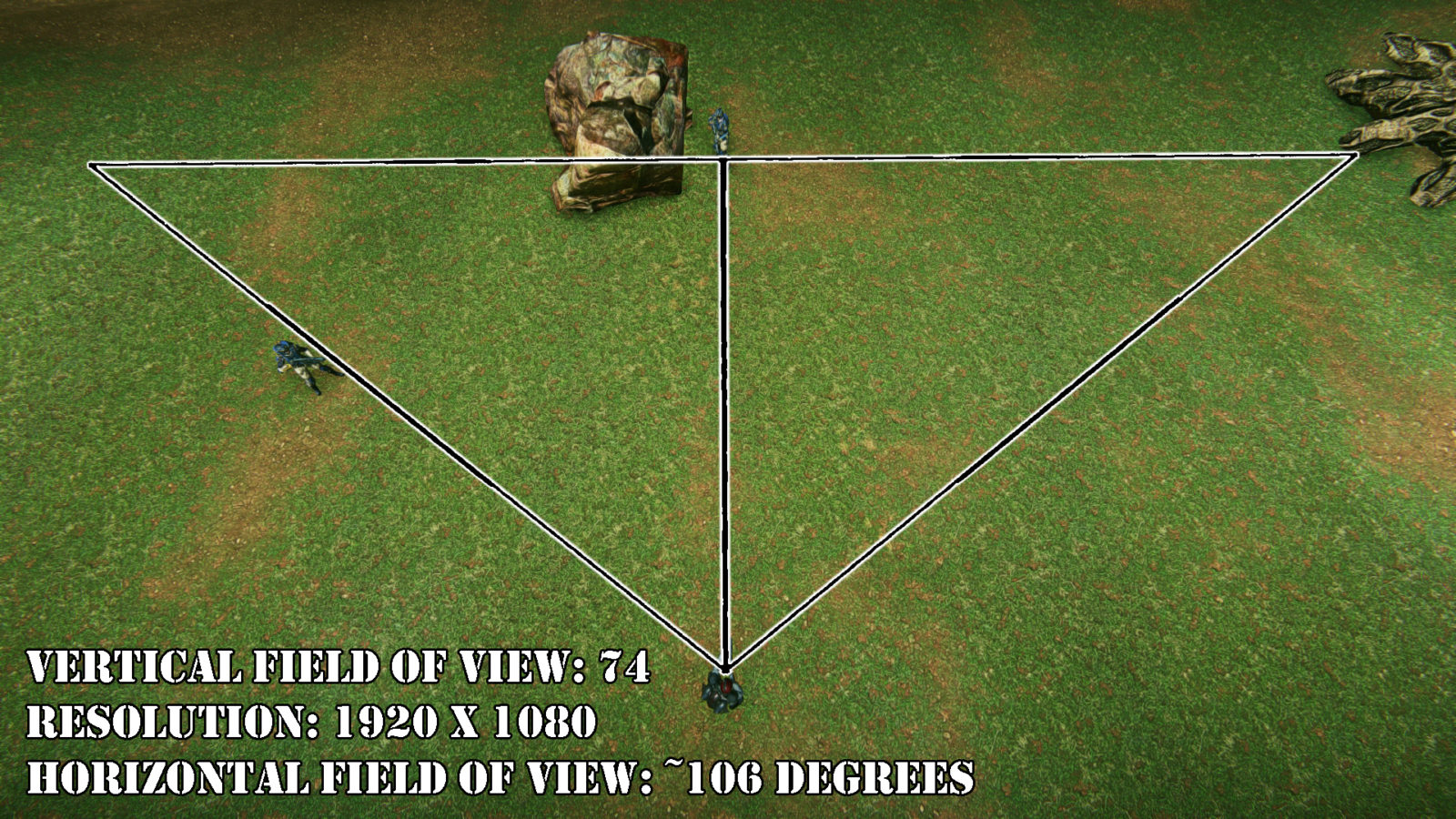
In real life, humans have about ~180 degree field of vision. But common gaming monitors are much smaller, and do not span the entire field of vision, so in game characters will not be able to see what happens at their sides.
It is possible to increase in-game Field of Vision past 74 degrees of Vertical FoV, but almost nobody does that. In vast majority of cases, you can expect enemies to not notice what happens to their sides.
Countering Darklight Flashlights

Keeping off the ground and out of predictable locations is often enough to keep you safe. Hiding at an elevated position, like on top of a rock or a shelf, will fool a lot of Darklight users, who are not going to go to super great lengths to find you.
Another method is to get outside. Its easy to search a tiny room, much harder to search a forest.
You can consider killing the Darklight user. However that isn’t always an option in crowded fights. It’s usually better to find a way to avoid the beam and re-position. Once enemies finish their sweep and think they are safe, it can be profitable to double back and take advantage of their relaxed attitudes. Do try and remember the player who pulled it out though. There is something incredibly rewarding about killing them after they cause you such trouble.
Darklight effect has a short range of ~11m, so if all else fails – just keep your distance.
Parkour
Stalker Infiltrator heavily relies on flanking, but unlike the Light Assault, you don’t have any extra mobility, besides the ability to safely move in enemy field of view.
You will have to creatively use your environment in order to freely move around. It is strongly recommended to watch CuteBeaver’s Parkour videos and study her Parkour Guide.
Videos
Vulnerable Targets

Targets of Passing Opportunity
They are vulnerable for the moment, but you don’t have much time to decide whether you want to engage or not. Roughly ranked from safest to engage to most dangerous:
- An enemy that is running away and being shot by your allies. If you’re not greedy for the kill, and the enemy has nowhere to go, you may choose not to engage at all.
- An enemy that is standing on top of an explosive that you can detonate with bullets or EMP.
- An enemy that has lost his shields to enemy fire or EMP grenade.
- An enemy that was wounded a few seconds ego, and his shields have just started regenerating. You can tell by a shimmer pulse over his body.
- A cloaked infiltrator.
- An enemy that is occupied with reloading or using a tool.
- Heavy Assaults using Anti Air rocket launchers are usually less aware and wiggly than Anti Tank launcher users. – CuteBeaver
- An enemy that is tunnel visioning and ADS shooting at someone else.
- An enemy that is sitting in cover and getting ready to engage someone else.
- An enemy that is aware of you, and actively looking for you, but in the wrong place.
Engaging a target of opportunity almost guarantees success in killing that target, but you will have limited time to act, so you can’t be picky about engaging in perfect conditions.
For example, you may not be able to close the distance for your weapon, or ensure that you have a safe escape route, or even do a quick look around to make sure you’re safe to decloak and there is no random enemy behind your back.
Sprinting enemies deserve a special hierarchy:
- An enemy that is sprinting below you.
- An enemy that is sprinting away from you.
- An enemy that is sprinting perpendicular to you.
- An enemy that is sprinting towards you.
Sprinting puts at least a 0.3 second delay before the enemy can deal damage to you, and that can be enough for you to deal enough damage to make the engagement swing into your favor. Especially if you engage from behind or from above, that will significantly increase enemy’s reaction time.
Another honorable mention:
- An enemy is far away, and you have lots of space and cover to maneuver around.
This situation makes it highly unlikely that anyone will come looking for you, and even if they do – they will probably not find you, because you will have crouchwalked away and hidden in deep cloak in plain field.
So you can attempt engagement for days. However, you are unlikely to actually kill the enemy, unless he’s already very wounded or you’re using Hunter Crossbow or the Blackhand.
Videos
Vulnerable targets
Other vulnerable targets include:
- Engineers behind turrets
- Hillside snipers
- Groups of medics near a choke point, they keep healing and reviving each other, but only a few of them are actually ready to defend themselves.
- You have to kill every single medic, or you hard work will be for naught.
- When going for a medic ball, it’s usually a great idea to cover them all with an EMP first.
Group Psychology

It is often easier to sneak up on a group of enemies, because people feel safer in a group, and they often assume that others are watching their back, when in reality they all tunnel vision in the same direction. Others might not even react if you kill one of them, as long as they don’t see you.
Movement is also easier in general, since they don’t assume you’re nearby.
Competency Display
Sometimes, you can immediately identify an enemy as more dangerous by his behavior. A skilled, experienced player will almost never stand still. For example, a medic that is actively moving around while reviving is more likely to react to your ambush.
Rules of Engagement

Once again, you’ll be managing risk vs reward, and what type of kills you’re going for. But one rule will always remain: fire first or don’t fire at all.
Never engage from a direction that enemies already expect danger from. If the enemy is already looking your way with a weapon ready to shoot someone, decloaking in his field of view equals getting shot instantly.
Spotting and Voice Callouts

Stalkers and all stealthy players need to be very careful about spotting, because it gives away your position, and can and will attract enemy attention to your position. In case of spotting, better to be safe than sorry, and not to spot enemies unless you’re in the middle of a bunch of allies or the enemy already knows your position.
You can purposefully give away your position to an enemy by spotting, and then rapidly move away and ambush him if he comes to investigate.
You can manipulate enemies by using in-game voice callouts. Bait enemies out of turrets without hacking them. Entice a medic to come to your location and stab them silly. Ask for ammo from enemy engineers. Spotting can also work. Just be careful about how often you give away your position.
Melee
There are several ways you can use a knife as a stalker, and each way has certain advantages and disadvantages.
Crossbow Melee Combo
A combination of Crossbow body shot and a quick knife attack nearly instantly kills any enemy, even through full nanoweave, with the exception of shielded Heavy Assaults.
This was the main way of engaging in melee until the melee weapons were buffed some time ago.
When to use
Crossbow Combo is great in two cases:
- Against lone stationary enemies.
- Interception combo against oncoming enemies, when you can crouch still in deep cloak, let the enemy come to you, and decloak and melee combo as they run by you, or even through you. Flawless timing is required.
- Against targets that need to be killed quickly.
When done properly, crossbow combo is very quick, you spend very little time engaging the enemy. You pop out for a moment, kill, and then escape in cloak before anyone realizes what happened. It also denies the enemy a chance to do significant damage to you.
Crossbow combo is very bad against shielded Heavy Assaults, but if you catch an oblivious HA without active overshield, you can potentially kill them before they have a chance to activate the overshield.
Another example where kill speed is the key: a vehicle pilot, repairing his nearby vehicle. If you fail to kill him instantly, he will just enter his vehicle, making him unreachable, and putting you in jeopardy.
When going for a Crossbow Combo, you’re still holding a ranged weapon in your hands, and you can respond to different threats should they arise. When you’re EMP breaching a room, you can bolt one enemy, and quick knife another one with minimal delay, and the first enemy can be at range. Or you can bolt + knife a full health enemy that somehow avoided the EMP.
Clunky and Punishing
While crossbow combo is very lethal, it is also easy to mess up. Missing the crossbow shot or the knife swing is extremely punishing, as there will be a 0.95+ second delay before you can do another quick knife swing or ~1.5 seconds before your Crossbow is ready to fire again.
There is also a 0.3 second Sprint Recovery delay before you can shoot the crossbow out of sprint, so the crossbow combo isn’t very good for chasing, and due to long delay between combos, it’s not great for engaging multiple enemies at once.
Avoid trying to melee combo moving enemies, especially if they’re not moving in a straight line. There’s a very high chance you’ll mess up the combo and die.
Trying to melee combo skilled Heavy Assaults is also futile, unless they are wounded and distracted.
Melee Combo with another sidearm
Melee finishers after a few sidearm shots are great, because they conserve ammunition and reduce Time-to-Kill. However, in most cases, you shouldn’t intentionally go for a sidearm melee combo:
- If you can sneak up into melee range, wielding the knife is usually better.
- If you can’t sneak up close and forced to engage at range, it’s usually better to just shoot the guy to death.
Use sidearm melee combo when you are already engaging the enemy with a sidearm at close range, and you and the enemy close the distance, and you feel that enemy will die from a melee strike.
Once again, avoid trying to melee combo Heavy Assaults, because it’s very hard to predict when the knife strike will be lethal against them.
Wielded Melee
Besides farming melee kills, there are several legitimate reasons to use wielded melee as a stalker:
- Frontloads a lot of damage.
- Can be used out of sprint.
- Surprises the enemy – very few people use melee.
- Less noisy than a firearm
- Conserves ammunition and doesn’t run out of ammo itself. You can potentially cut more people that you would be able to kill with any sidearm.
- Can be surprisingly effective against shielded Heavy Assaults at close range, if you can hit headshot strikes.
- Looks cool and feels exhilarating.
The first two bolded points are the main advantages, and they let you play on Internet Delay. Basically, you may round the corner and stab an enemy in the eye before he gets a chance to see you.
This can be especially effective when you know there is an enemy behind cover, but you don’t have direct line of sight to kill him with a sidearm. Or when solo breaching small rooms with 1-2 enemies.
Engaging in melee is generally countered by simply moving around, so it’s preferable to engage enemies near a wall, perpendicular to that wall:
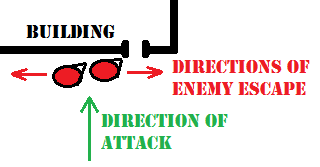
This way, you ensure that at least the first enemy you engage will not be able to kite you, and in general it limits enemy options.
Wielding a standard knife
Wielding a standard knife and spamming attacks at the enemy can often kill them before they have a chance to react properly. It’s a bad habit, but it works.
Wielded knife damage is consistent and lethal, as it goes through nanoweave and kills standard enemies in just two strikes. An exceptions: enemies with Auxiliary Shield – usually newbies – will require 3 body strikes.
To counter the potential Auxiliary Shield advantage, try to always score a headshot with the first strike. If the enemy is already wounded, you have a high chance of instantly killing them.
Heavy Assaults with NMG and Adrenaline overshield will be always killed in two headshots, but Resist Shield users may require an additional swing, if they started at full health.
0.4 second TTK against most targets and the ability to perform melee attacks out of sprint make wielding standard knives really powerful.
You never run out of ammo, so running into a crowd and just knifing left and right can be surprisingly effective. If you can score a good EMP grenade hit, any enemy will be killed in one body strike.
Wielding a power knife
If you have picked up the bad habit of randomly spamming the wielded knife in general direction of the enemy when you were using the standard knife, you will have to relearn, because misses are especially punishing with the power knife, and you should need only one swing anyway.
Power knives are also great at chasing enemies, you can sprint slam yourself into them when they stop for a moment, and swing out of sprint, nearly guaranteeing a kill.
Interception melee charges can be effective – pull out the knife an advance and wait in deep cloak as the enemy approaches, then sprint at the enemy while decloaking and activating the knife and stab them in the face.
In contrast, this trick is much more likely to fail when using a standard knife, which often leads to completely unpredictable results.
After the first stab, a newbie might keep running like nothing happened, while a veteran may jump forward and do a 180 noscope instakill with a Commissioner, or just suddenly turn around. In that case, PS2 Movement Prediction is likely to screw with you, and it will look like enemy ran behind your back with far too much speed.
Power knives are louder and produce faction-specific noises, so you need to account for the attention you might draw from other aware enemies. You don’t have to activate the knife for every kill, though.
Disadvantages of Melee Engagements
Easier to fail. Cloak isn’t as effective up close, and for a melee engagement you have to close the distance each time. Enemy might turn around and see your approach. Or you may be noticed by someone else.
They make you tunnel vision as you approach the target, so you might miss other nearby enemies until it’s too late.
When they fail, they fail hard. Any engagement can sometimes go wrong. But a failed melee engagement often leads to death.
Being close to enemies is dangerous. You may be hit by friendly fire that was intended for the enemy.
Even if you kill the enemy you were going for, you may suddenly realize there are more enemies than you expected, and now you have no way to break contact.
You can’t control actions of allies and enemies, so you can never guarantee a perfect melee engage, regardless of your skill and equipment. Melee engagements are often more risky than they’re worth, and just because you can go melee doesn’t mean you should.
Sidearm
In general, you want to engage the same Vulnerable targets or Targets of Passing Opportunity. Your sidearm and attachment choice will have a heavy influence on what and how you can engage.
Keep your sidearm’s strengths and weaknesses in mind, and adjust your playstyle accordingly.
Using a Suppressed sidearm or the Crossbow will make you more stealthy, and give you an option for a stealth engage: when you decloak from a deep cloak, but keep sitting still, and concentrate on shooting the enemy, while he is trying to figure out where he is getting shot from. Lack of a muzzle flash can make it challenging, and tracers don’t render very well at close range.
This engagement style is viable even with an unsuppressed sidearm, if you’re engaging from above or from behind, but naturally it will broadcast your position to nearby enemies, and you will have to rapidly move away and restealth after the kill.
Crossbow
Vanish Attack: At longer distances you will be unable to fire both crossbow bolts before a target can react to being hit, due to the low projectile speed. By the time the first bolt hits them and the second is airborne, the enemy will already have wiggled out of harms way.
Consider firing once, and then re-cloaking to fire your second shot later on. This way, bolt’s long travel time will play into your hands – by the time the enemy receives damage from the bolt, you will be already in cloak.
You can try predicting where the enemy will take cover. This happens a lot with heavies. They get shot, their shield goes up, they face the directional hit-markers… However since you cloaked they don’t see anything…. After a couple seconds they go about their business. Usually they drop their over-shield and that is your hint to fire the second shot.
Sniper Hunting: Stalker cloak is almost criminal for killing enemy snipers. You know where they will be, and they have to stand still while taking their shots. Aim for the juicy headshot instant kill (within 45m).
EMP Combo: combined with EMPs, the Crossbow becomes exceptionally great at clearing rooms, as a single body shot will be lethal against any EMP’d enemy. You can potentially kill up to 4 people before having to reload, and it’s easier to do than with any other sidearm. As you need only one shot to kill, you can fire off a shot and immediately switch to another target, while any other sidearm would require you to focus on hitting several shots, and this could make you tunnel vision and lose awareness of other enemies and your surroundings.
Crossbow allows you to quickly switch gears and focus on killing the next enemy in a high stress situation. This allows more time for planning and less tunnel vision. It also means less exposure when popping in and out of cover.
Grenades
EMP Grenades: be mindful of their detonation delay of ~1 second.
Normally, the detonation delay is a nuisance, but when using the Crossbow, you can take advantage of it. With proper timing, it is possible to “OHK” the enemy by shooting him with the Crossbow the exact instant the EMP detonates.
Tactical EMPs: when there is an enemy on your tail, you can round a corner, and throw an EMP behind you, prepping the enemy for an easy counterattack kill. You may even EMP yourself for this. Kinda sloppy but it can help to recover from a bad situation.
EMPs are also great at making enemy mines work against them. Often one EMP thrown into enemy controlled building can result in a few kills from enemy AP mines.
Frag Grenades too can be used to clear enemy deployables, but it is noticeably harder than with EMPs.
AP Mines
Cover Your Tail: drop mines if an enemy is chasing you. Even if the mine won’t kill, it can weaken the enemy or convince them to stop chasing.
Explosive Spotter: Use your Motion Spotter as a trap with mines. Corners work well for this, as they force enemies to move around the wall in order to get line of sight on the spotter. Most players will take corners quickly, without regard for any possible mines at their feet.
Explosive Corpses: You can try hiding a mine near enemy corpse. This is helpful when medics rush in to revive a group of enemies you have just killed. Or even a single enemy, if you know a medic is nearby.
Alternatively, you can just hide right next to the body and try and stab them. This can backfire if the medic is smart and pulls out a Darklight, which is why I have taken a liking to explosive corpses over standing around dead bodies. Less risk involved and you can still finish the medic from range with a sidearm if they are wearing flak.
Explosive Frisbees: toss Bouncing Betties and Proximity Mines over walls and onto enemies’ heads. This is a great icebreaker for stalemates. If possible, follow up with an EMP. The activation time for the first mine happens right after the EMP detonates. The resulting explosion looks really pretty.
You can do this to prep enemies before you take a corner or ambush them. It’s basically a tactical EMP with more teeth, because it can kill instead of just weakening.
Claymores aren’t nearly as great in mentioned “pizza delivery” tactic, but they can be potentially more powerful when used as actual mines to protect your flanks and doorways.
Heavy Assaults
Heavy Assaults are always popular, and their overshield makes ambushing them considerably harder. Learn to distinguish Heavy Assaults from other classes, because in most cases they need a different approach.
You must inflict as much damage as possible before the HA can react to your ambush. This doesn’t give you a whole lot of time to work with. In most cases, you’re looking at less than half a second worth of free damage. After that time expires, expect their shield to come up.
Just try and look at this like a challenge. Ultimately these HAs are teaching you to make better, cleaner ambushes.
Shield Recharging Fields

Shield Recharging Fields are deployed by medics. They allow enemies to recharge shields even while they are being damaged, so these fields can and will mess up your engagement with weapons that rely on dealing a very specific amount of damage.
For example, an enemy that would normally die to 2 standard knife swings will require 3 swings when under effects of the recharging field. Same goes for 2x shot Crossbow kill, or Crossbow melee combo.
Additional Tactics and Playstyles
Shadowing
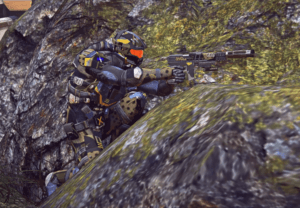
This style focuses on cautiously following your targets, and attacking with your secondary weapon.
Shadowing is all about mitigating the risks by engaging on your terms, in circumstances that favor your weapon and give you a way to safely escape afterwards.
Shadowing relies on Headshot Openers (HSO) to cut down Time to Kill and make the attack more successful. Having good aim to score headshots before the target can react helps to avoid taking unnecessary damage and conserve ammunition. This style is risky and mobile, and requires you to be very creative, because enemies will often hunt you.
It is critical to learn how to counter or trick enemies who come looking for you. The more sneaky you are, the longer your life expectancy will be. Picking off distracted targets one at a time is ideal. Alternatively, having good threat assessment skills will allow you to pick off multiple targets during a single attack.
When chasing an enemy, make sure there is nobody behind you before you engage.
Ideally, you want to have a bit of distance between you and the enemy. Positioning next to an escape route or a cover object helps to stay alive after you have opened on an enemy.
A piece of cover that obscures a part of your body may help shield you from some of the returning fire. Once the enemy dies you can use the cover object to escape from anyone who witnessed your attack.
A wide variety of weapons can be used for Shadowing. Unless you have excellent aim, select faster firing weapons, like the Beamer, which will assist you when killing mobile targets.
Going for Headshot Opener is critical even for spammy weapons, because the faster you kill an enemy, the less damage you will take from return fire, and the less risk you face from enemies who witness the attack.
Shadowing allows for a choice between silenced weapons, and louder weapons, however, your movement and how you go about countering enemies will change based on your selection. The effective range of each pistol will dictate how far you can safely operate. If you are too far away, kills will be expensive and you will be exposed to enemy fire for dangerous lengths of time. Learning the balance of risk vs reward, in combination with headshots allows you to push the weapon to its fullest.
Medkits may also become more lucrative than Mines, as they free your implant slots for other options.
You will enjoy learning: Battle Flow, Map Awareness, Enemy Manipulation, Reading Enemies Intentions, a high focus on improving your Aim, Headshot Addictions, Threat Assessment, Valuing Hard Cover, Increasing Doubt, Countering Enemies, Trapping, Juking, Dancing, and the art of bailing.
Perching
Perching is taking a long range overwatch approach to stalking, using weapons like Blackhand or the Crossbow to take down targets at range.
This is the easiest playstyle to pick up as a new stalker. Having some distance between you and enemies increases survivability and gives you a higher chance of escaping when being shot at.
The extra distance also makes cloak concealment more effective and gives you additional space to disengage and hide from enemies if they come searching. Perching keeps you out of reach of Darklight Flashlight users.
Despite being easy to pick up, the skill ceiling for Perching is rather high and there is considerable depth to the playstyle.
You will enjoy learning: Parkour (Movement Mechanics), Precision air drops, Battle Flow, Map Awareness, Recon Dart Manipulation, Camouflage, Reading Enemy Intentions, and high a focus on Improving your Aim.
You will also have fun discovering spots to “snipe” enemies in the middle of crowded fights, where a Hunter Cloak Sniper would be unable to operate.
Your creativity is expressed in finding vantage points that are off limits to other classes, and you may find yourself purchasing camo to better blend into backgrounds. Those with deadly fashion sense should apply 🙂
Air Drops
It’s a common tactic to use an expendable Valkyrie or Ejection Seat ESF to strategically insert yourself in a specific position. Usually there is no need to run any additional upgrades on the jet, like Stealth.
Denying Vehicle Spawning
In coordinated teamplay setting, it is sometimes justified for a stalker to camp a Vehicle Terminal, and kill anyone who tries to pull a vehicle.
A certain Game Update made it possible to bypass the Vehicle Terminal, and spawn a vehicle directly from the Map. However, the base must be uncontested, and have a functioning Vehicle Terminal. So in order to fully deny vehicle spawning from a certain base, it is better to hack the terminal and flip a point than camp the terminal in person.
Mastering Stalker
Step 1. Learn how to get good ambushes, how to move around without getting noticed. Learn to kill swiftly and efficiently, with minimal increase of enemy awareness to your presence.
Step 2. Learn how to survive and restealth after an ambush. Even a stalker newbie can get a good ambush on one enemy, simply by slowly crouchwalking up to him, and then unloading a sidearm into enemy’s back. Or running into a crowd of enemies and sprint slamming a power knife into someone.
What differs a good stalker from a bad one, is the ability to consistently get good ambushes, survive after the successful ambush or manage the fallout from a bad one.
Step 3. Know when to leave. Don’t stay in one area for too long. Stalkers are annoying. For some reason, people hate “invisible” players that can strike them in the back at any moment. If you stay in one area and repeatedly kill the same players over and over, somebody with Darklight Flashlight will eventually come looking for you. It also makes you predictable and easy to find even without a flashlight.
Teamplay Aspect
Helping your faction
Besides killing, you can help your faction by:
- Destroying Motion Spotters, Spawn Beacons, mines and other deployables.
- Hacking enemy turrets, even if you’re not going to use them to engage enemies yourself.
- Hacking enemy terminals.
- Specifically, you can hack an enemy vehicle terminal and pull an extra Sunderer. Things like that are often enough to turn the tide of battle, or at least solidify your faction’s grip on it.
- Providing intel on enemy position with a Motion Spotter. You can also Q Spot deployed enemy Sunderers and relay information about their position with a /regionsay chat. Unlike other classes, you can afford to just sit back and type.
- Harassing MAXes and their support. Your potential damage against them is limited, but they are bulky, slow and easy targets, and you can harass and distract them, and maybe even force to run away. If a MAX is already getting gunned by your allies, you may join them to focus fire.
- Breaking up chokepoints and harassing frontlines from a flanking position, forcing enemies to fight in multiple directions at once. This makes it significantly easier for your faction to advance the frontline.
Helping your squad
Infiltrators increase awareness and protect the squad by communicating incoming threats. Those extra EMPs become critical in softening an enemy push, or destroying enemy Spawn Beacons to keep enemies off roofs, and limit their access to entry points the squad is set up to handle.
A stalker can also deploy and protect a Spawn Beacon during a squad wipe, allowing the squad to to return to the fight before the enemy can fully secure the location.
Between Motion Spotters and EMPs, a Stalker Infiltrator can prevent or mitigate surprise attacks against the squad, reducing the chances of the enemy being able to take advantage of a weakness.
Cloak allows the stalker to place himself outdoors to mitigate pushes and build-ups with Mines and EMPs, though usually leaving the building is not the best option.
Cloaked stalkers can hold a position that would be normally too exposed, and protect their squad from being flanked by a single mobile enemy that could do a lot of damage.
Enemies don’t have an initiative and clientside advantage on a cloaked stalker.
A cloaked stalker doesn’t have to be staring down the corridor, holding his angle, and is free to give more attention to the minimap, and notice buildups in enemy forces and flanking units.
Stalkers can also fly ahead in a Valk or ESF and begin capturing the next base down the lattice lane, this conserves time and prevents the enemy from back capping the facility you had just captured while you’re moving to the next one.
Stalkers can do many things, from hacking AA turrets and pestering enemy Liberators shelling an outdoor point, to overloading SCU Generators in Biolabs.
Sneaking somewhere and placing beacons so your squad can reach higher ground.
The list goes on and on, suffice it to say that infiltrators’ worth should not be strictly based on how many bodies they can pile up. Often playing in a coordinated squad is more about good timing, providing support and increasing awareness.
-[3GIS] Circuitry of Teamwork
Stalkers allow the squad to hold more advantageous locations, choking enemies throughout the battle.
Stalkers can babysit a point so the squad is free to hold key locations.
Stalkers don’t need to leave the squad like a sniper would, and they can salvage a bad situation better than an SMG user could.(Ex: Dropping a spawn beacon after your squad is wiped off point to get them back before connection ticks down to zero)
-CuteBeaver
Closing Thoughts and Credits
We hope that this guide has armed you with necessary knowledge to have success as a Stalker Infiltrator. Please do not hesitate to ask any questions in the comment section below.
Huge thanks to /u/CuteBeaver for her continued support, invaluable help and expertise in developing this guide.

